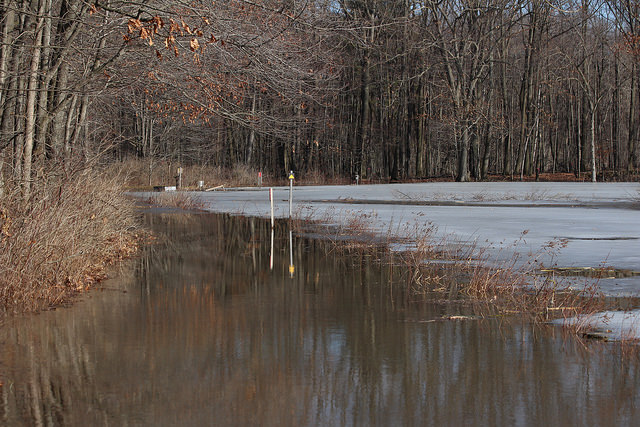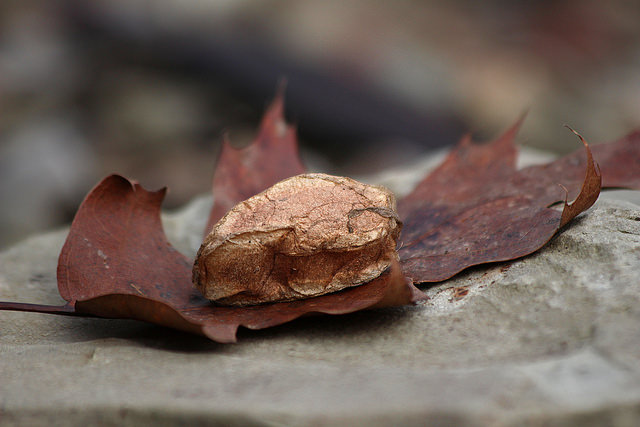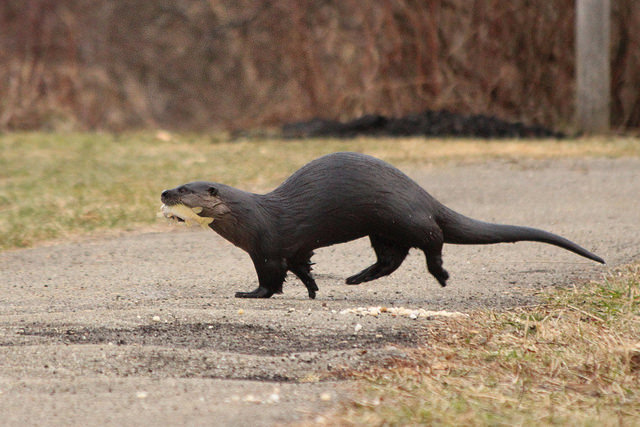The recent flooding at the Audubon Community Nature Center provided a rare opportunity. With water a foot deep on many parts of the property, wildlife became concentrated on the high parts of the forest. Many animals had nowhere else to go without swimming, so I took advantage of the wet by wading out in my tall Muck boots and wandering onto the remaining high points of the property.
The first animals isolated by the flooding were chipmunks. Their burrows, filled with food for the winter and a warm cozy bed, were now underwater. They had to fend for themselves on tiny forested islands surrounded by floodwaters. Some dove into the water and swam for the next island as I approached. Others skittered up the nearest tree and watched warily from above.
The hawks seemed to be taking advantage of this situation. I might see one or two hawks on a normal hike. The flood lands had four hawks hunting on them. The hawks were presumably hunting the chipmunks and other animals that were left on unfamiliar ground by the flooding.

Flooding at Audubon, and around the area, forced many animals to relocate to higher ground.
Audubon is a wetland. As such, one of the jobs of the property is to store floodwater and release it slowly into the creek. This keeps the Conewango Creek from flooding as high as it would If all the water ran into the creek at one time. When wetlands are filled in, floodwaters rise faster and may cause more damage. This floods the trails and makes some places inaccessible, but it also creates an environment ripe for amazing moments.
My hike around the pond ended abruptly when the water ahead was higher than the top of my boots. I stopped and stared, looking around the forest for an area of higher ground, but could only see a long flat expanse of water. The current was rushing through the forest, making footing treacherous. Glancing down one last time at the deep spot, I noticed an oak leaf floating by with an unusual lump on top.
It looked rather like a little oak leaf raft like a child might make. Attached to the top was a yellow-tan blob. The current was washing it away, so I quickly reached out and grabbed it with one gloved hand. It was what appeared to be a Luna Moth cocoon. It went into a pocket and now rests in the screened outdoor “cocoonery”, where many moth cocoons are waiting to emerge next spring.
It seemed like my entire walk had been timed perfectly to grab that cocoon out of the water and walk back to the Nature Center.
Luck favors those who are prepared. To see many amazing things outside, you have to go outside. It is simple math: the more frequently you go outside, the more times you will see something amazing happen in nature. It is debatable whether or not a moth cocoon on a leaf is something amazing, but it was amazing to me.

The entire hike through the flood seemed timed perfectly to rescue this Luna Moth cocoon from the water. Photo by Jeff Tome
Other things in the flood would probably be amazing to anyone. I walked out the door to feed the birds at Audubon and a sleek brown otter body emerged from the pond, looked around and dove under the ice. My camera was inside, but some fast running solved that problem. I watched the hole patiently, while ice cracked in the cold.
Nothing emerged. Hands numbed. Nostrils froze shut. The hole remained empty, but the ice continued to crack. River Otters were shoving their heads through the ice, cracking it to get a breath or swallow a fish. In a few minutes, it was obvious that there were at least three otters.
Slowly, they moved away and I felt safe to move. Another staff member and I crept up on them on the other side of the pond and watched them from very close. They dove, waving their tails in the air, or came up on the ice to eat fish. They were so close that it felt like any movement would scare them. We crouched in place as legs and fingers numbed in the cold. The otter show was amazing to see.
Perhaps the otters were refugees like the chipmunks, escaping the raging Conewango Creek for the calm ponds at Audubon.
It was the right place at the right time. I have stood in that same place thousands of times, but only seen three River Otters once. Perhaps it will happen again. Perhaps it could happen to you. All you have to do is come out and wander the trails. Every day brings something new.
Jeff Tome is a naturalist at the Audubon Community Nature Center.


Recent Comments